 |
 |
 |
B rain Awareness Week (BAW) - March 13-19, 2017 rain Awareness Week (BAW) - March 13-19, 2017
Brain Awareness Week (BAW) is the "global campaign to increase public awareness of the progress and benefits of brain research."
TDLC celebrated Brain Awareness Week on Saturday,
March 18, 2017, at the San Diego Supercomputer Center Auditorium at UC San Diego. The event included a
screening of the film "Screenagers: Growing Up in the Digital Age" with discussion afterwards. (Photo credit: filmmaker Delaney Ruston)
|
|

|
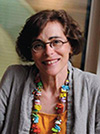 What makes facial recognition "almost magical"? What makes facial recognition "almost magical"?
TDLC Investigator Dr. Marlene Behrmann, from Carnegie Mellon University, is
co-author of a study in the Proceedings of the National Academy of Sciences that discusses the "age-old mystery" of face recognition. (Pittsburgh Post-Gazette12/27/16) More
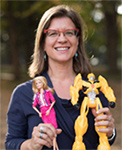 Finally, a type of face that men recognize better than women (11/16/16, Vanderbilt News) Finally, a type of face that men recognize better than women (11/16/16, Vanderbilt News)
TDLC investigator Dr. Isabel Gauthier led the study. The team, using Barbie Dolls and Transformers, found that men were better at recognizing Transformer faces while women were better at recognizing Barbie faces. This finding supports the theory that experience plays an important role in facial recognition. (Photo: John Russell/Vanderbilt University). More Additional article (11/21/16) Additional article (11/21/16)
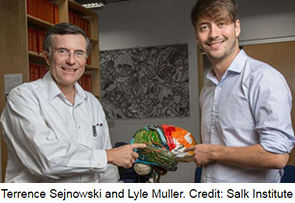 'Princess Leia' brainwaves help sleeping brain store memories (Salk; 11/15/16) 'Princess Leia' brainwaves help sleeping brain store memories (Salk; 11/15/16)
Salk researchers discover rotating waves of brain activity that repeat during the night. TLDC Co-Director Dr. Terrence Sejnowski, with fellow Salk scientists including Dr. Lyle Muller, co-authored the study.
 Salk article Salk article
 eLIFE article eLIFE article
Learning to Move and Moving to Learn
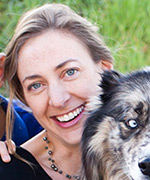 TDLC scientists Leanne Chukoskie and Joseph Snider have been awarded an NSF grant to study how physical movement can be used to identify children with learning disabilities. Additional project colleagues include Drs. Jorge José, Terry Sejnowski, and Emo Todorov. The study, titled 'Learning to Move and Moving to Learn,' will measure movements of the body, face and eyes in middle- and high-school-age children. These methods could represent a powerful new tool in measuring signs of learning disability. (IUB Newsroom, 11/9/16). TDLC scientists Leanne Chukoskie and Joseph Snider have been awarded an NSF grant to study how physical movement can be used to identify children with learning disabilities. Additional project colleagues include Drs. Jorge José, Terry Sejnowski, and Emo Todorov. The study, titled 'Learning to Move and Moving to Learn,' will measure movements of the body, face and eyes in middle- and high-school-age children. These methods could represent a powerful new tool in measuring signs of learning disability. (IUB Newsroom, 11/9/16).  More More NSF webpage NSF webpage
|
|
|
| |
| |
|
This message was sent from:
The Temporal Dynamics of Learning Center (TDLC.UCSD.EDU),
University of California, San Diego,
9500 Gilman Drive, La Jolla, CA 92093
To learn more about TDLC, please visit us on the web at: TDLC.UCSD.EDU
Please contact webmaster@tdlc.ucsd.edu to unsubscribe.
TDLC is a Science of Learning Center (SLC),
one of six SLCs funded by the National Science Foundation. NSF grant #SMA 1041755
|
|
 |
 |
March 2017 |
|
 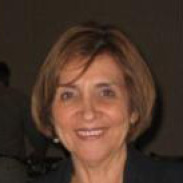
TDLC's The Educator Network (TEN)
Check out the latest discussions and forum topics on the TEN website here!
|
|
|
 |
 |
10 Online Courses With The Most Enrollees
The top course listed is taught by TDLC's Dr. Terrence Sejnowski, with Visiting Scholar Dr. Barbara Oakley. Their Massive Online Open Course (MOOC) for Coursera - "Learning How to Learn" - has "had a total of 1,192,697 enrollees!"(University Herald, 2/28/17)
More
|
 |
Innovation in Brain Imaging
Study collaborators include TDLC's Drs. Marlene Behrmann and Michael Tarr. (PhysOrg, Feb. 16, 2017)
More
|
 |
10 Must-Read Brain Science And Psychology Studies Of 2016
(Forbes, 12/29/16)
This article includes a study co-authored by TDLC's Dr. Terry Sejnowski, that describes how "Your Brain’s Capacity is Much Greater than Anyone Realized." More |
 |
Nine startups Apple bought in 2016, and what they do
The article features Emotient, which originated as a start-up at UC San Diego by a team that includes former TDLC researchers Drs. Marni Bartlett, Javier Movellan, and Gwen Littlewort. (Business Insider, 12/6/16)
More |
 |
Women might recognize faces better, but at least men can tell one Transformer from another
TDLC investigator Dr. Isabel Gauthier led the study.
(ZME Science, 11/21/16) More |

|
The brain can't feel pain
"Even though the brain is the headquarters for detecting pain, it can't actually feel pain because there are no pain receptors on your brain! You get headaches when the nociceptors on the dura and pia, which form the barrier between your brain and skull, are activated." (Quoted from Knowing Neurons)
|
|
|
|
 |

![]()
